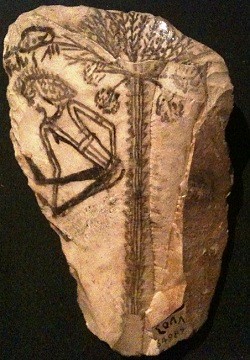THALLĀJ is the name for a bringer of ice from spots where it is deposited in winter, like a mounded knoll or a crevasse or some such place in barren high country where frost descends during the winter months. They then take it and compress it and lay it away in special storehouses they maintain, where it is prevented from melting away by some means they have adopted, until the summer months when they haul it around and sell it for a considerable price.
The profession of the durma shukr (?) proliferates among us in Syria. More than a hundred loads of ice are sold every day in summer, to licorice and syrup vendors, and for domestic use as well as other purposes. In Syria, our supply never gives out in summer or in winter, with Mt. Hermon covered in snow year round since God created it.
Doctors of science tell us that snow is formed from water that rises from the sea. When it hits the sphere of celestial cold called al-zamharir, it becomes rain, but when played by cold winds it coagulates and falls on countries that are far from the sun, in the nutlike pellets we know as hail, or delicate flakes that we call snow.
Against high fevers, against mange and other inflammations of the skin, and for digestion systems weakened by the heat, the benefits of ice are huge. It is an aid to fattening every animal except the human. Its effects can be injurious to the aged, the phlegmatic, and those afflicted with chronic dry mouth, unless it is mixed with cloves and honey.
Al-Sayyid ‘Abd al-Ghani al-Nabulusi, God bless and keep his soul, said in its praise (meter: khafīf):
Ice is water from the fount of life.
It soothes the heat of fevers,
cools down livers, and keeps
stomachs from boiling over.
Be free from words of doctors and their promises,
and brush off their advice,
and smile and sip its waters, and the toughest
foods will go down nice.
Cold and white as cotton fluff,
to the overheated it's like rain to tender plants.
May we never be without our bringer
to the ailing of the cure of cures.
Ice of Damascus takes away more pains
than ice of any other place.
Here's another charmer of a witty poem on the subject (meter: khafīf):
Do not despise Damascus when you visit.
She does not hide from you what she's about.
Pass through in the spring, and
in your face she'll laugh with flowers.
Come by in winter, and you'll see
her snow gobbed on your beard.
In sum: It is a trade by which a lot of people earn their living, praise be to Him Who inspires anything He wants to do anything He wants.
From the Dictionary of Syrian Trades, vol. 1
by Muhammad Sa‘id al-Qasimi (1843–1900)










